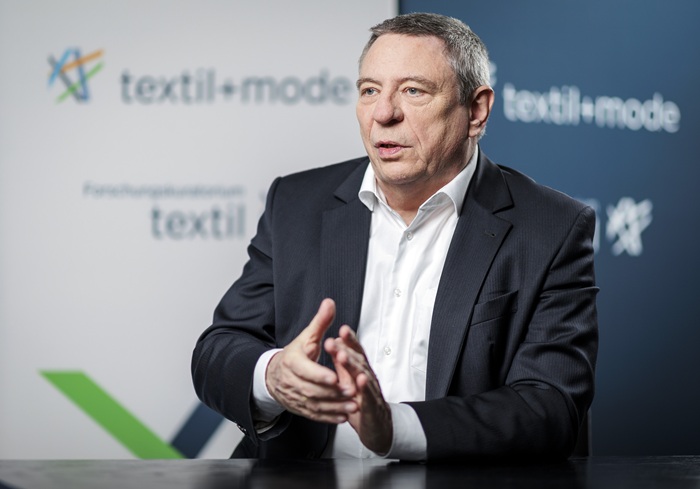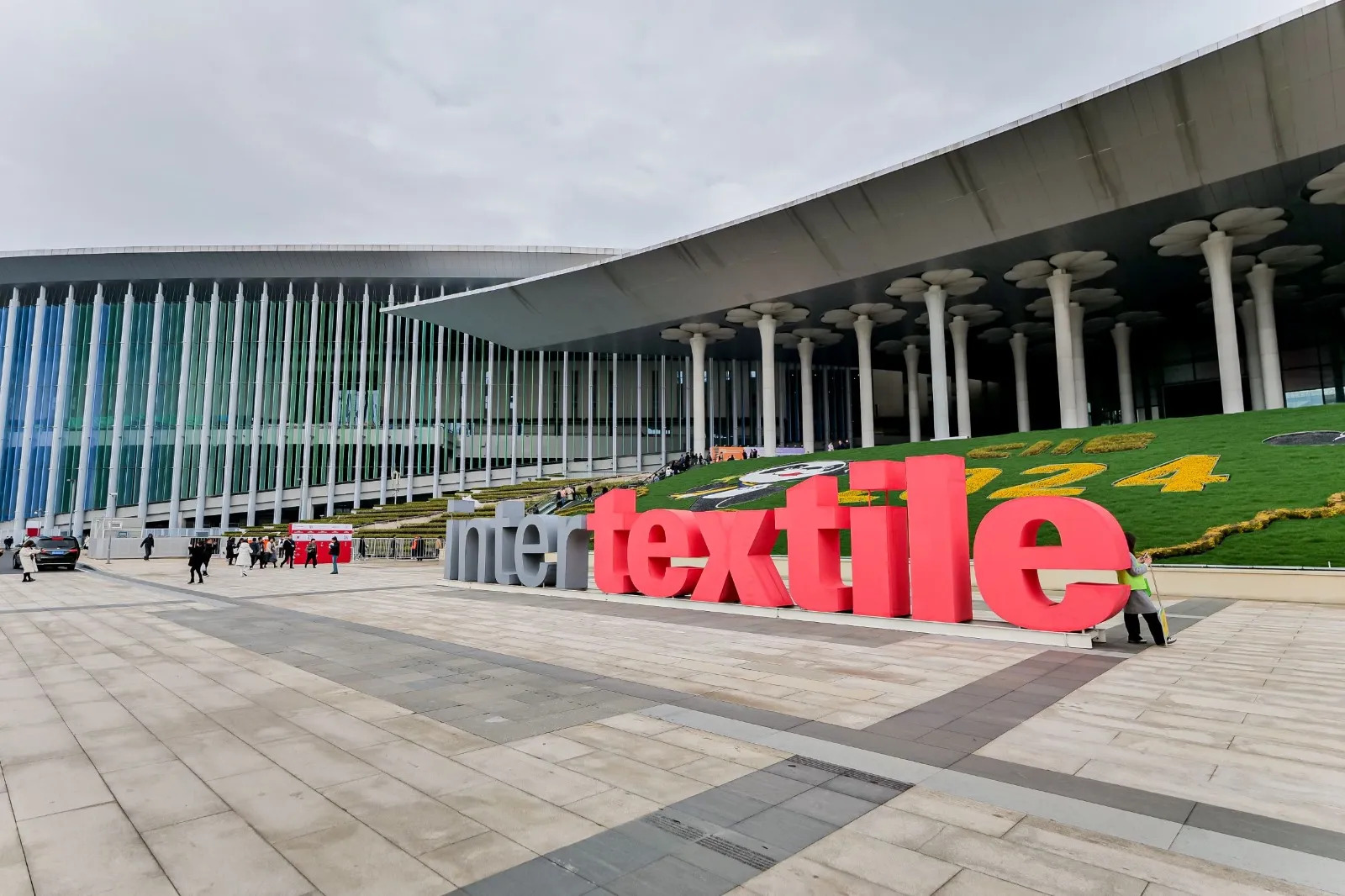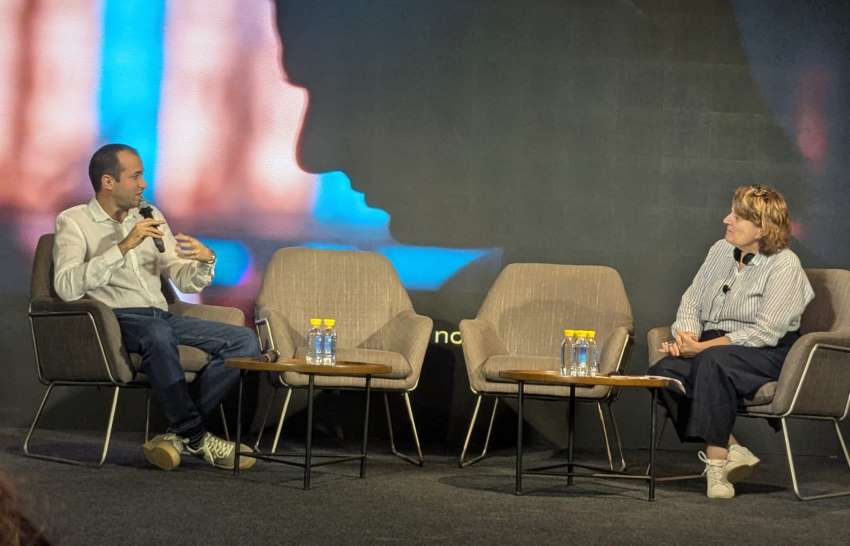FW
"Owing to its low cost capabilities, Ethiopia is slowly turning into a dynamic apparel-sourcing hub. Manufacturers from China, South Korea, India and other countries have opened new plants in the Africa’s second most populous nation while a growing number of European and US brands are sourcing garments from there."

Owing to its low cost capabilities, Ethiopia is slowly turning into a dynamic apparel-sourcing hub. Manufacturers from China, South Korea, India and other countries have opened new plants in the Africa’s second most populous nation while a growing number of European and US brands are sourcing garments from there.
The connectivity a big plus
The biggest factor in its favour is the planned opening of a new railway line to Djibouti, located on the Horn of Africa in the Arabian Sea. The railway will facilitate transport of goods from the landlocked country's industrial areas, like the Bole Lemi Industrial Park, an hour's drive from the capital Addis Ababa. Opened in 2015, the sprawling 150-hectare park is bustling with Chinese, Taiwanese and South Korean production facilities, conveniently clustering factories for textiles, apparel products and leather shoes in one area.
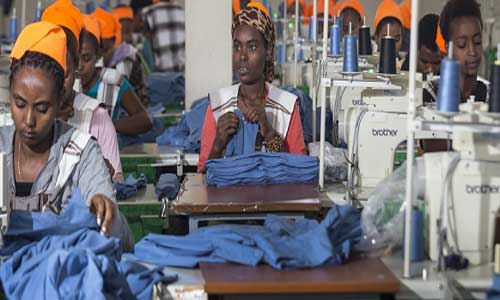
At a factory operated by Shin Textile Solutions, a South Korean company, workers sit at long rows of machines sewing mainly sportswear. According to the general manager, the plant's entire output is exported, with about 60 per cent going to Europe, 20 per cent to the US and the remaining to Asia.
Government’s initiatives
Ethiopia's main exports include coffee, gold and leather products, but the government is stepping up efforts to develop new industries. Arkebe Oqubay, Special Adviser to Prime Minister Hailemariam Desalegn, has pledged to transform Ethiopia from a farm economy into an industrial powerhouse. As part of its efforts to turn the country into an thriving, middle-income economy by 2025, the government has been building industrial parks. The newest is Hawassa Industrial Park, a one-hour flight from the capital. Among the 15 companies with manufacturing facilities there is US-based PVH Corp.
PVH's 280 employees produce garments for a number of international brands including Calvin Klein, and export them to Europe and the US. Ethiopia's low labour costs make it an attractive garment-sourcing destination, according to the company. The average monthly pay for a factory worker is about $50, compared with $140-160 in Kenya, $70-90 in Bangladesh, $150-170 in Vietnam and $400-500 in China. The country's young, low-wage workforce gives it the potential to grow into a major garment-sourcing hub with a vibrant market.
The inland nation used to depend heavily on trucking, hindering its transition to a more export-oriented economy. But the new railway connecting Addis Ababa to Djibouti will solve this problem. The government has built a distribution center in the Addis Ababa suburb of Mojo, where there is also a train station on the new line. Goods from Ethiopia's industrial parks will be sent to the Port of Djibouti via the center. Previously, it used to take three days to transport goods by truck from Addis Ababa to Djibouti. The railway will cut this to about nine hours.
"Yarn prices are expected to be range bound given moderate utilization levels and soft cotton prices. Spinning mills that were facing a problem during the first half of FY17 due to rising prices of cotton are soon set to see a U-turn in their fortunes. In the last two months, news of good monsoon, higher acreage under cotton cultivation and better output expected for the 2017-18 season are harbingers of stable, if not higher profitability."

Yarn prices are expected to be range bound given moderate utilization levels and soft cotton prices. Spinning mills that were facing a problem during the first half of FY17 due to rising prices of cotton are soon set to see a U-turn in their fortunes. In the last two months, news of good monsoon, higher acreage under cotton cultivation and better output expected for the 2017-18 season are harbingers of stable, if not higher profitability.
Cotton prices soared from Rs 90 per kg to around Rs 140 per kg from April to November 2016. Lower crop and tight inventory levels fuelled prices in the domestic market. Meanwhile, news of China’s lower stock inventory led to hope that China’s cotton imports will resume again. This too supported the high cotton prices. Spinning mills therefore bore the brunt of the high prices impacting operating margins during the last two quarters.
Yarn prices yet to revive
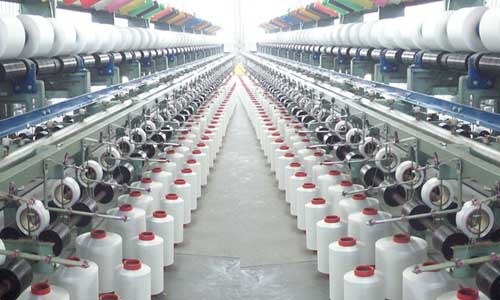
But softer cotton prices in the last two months bring hope for mills. Experts forecast a 10 per cent increase in acreage in the 2017-18 season after a similar decline in the previous season. Also, international prices are unlikely to firm up given the robust harvest in US and Australia. Domestic prices being linked to global indicators, they should therefore stay soft in the coming months.
The key, however, is for yarn demand to increase. India’s total yarn production declined to a five-year low in FY2017. The demand from mills was weak during 2016 primarily due to a steep decline in cotton yarn exports (due to weak Chinese imports), which comprises a third of the country’s output. Although exports have revived in the last few months, analysts believe that it is insufficient to offset the steep decline earlier.
Mills are also hopeful of higher off take by domestic fabric weavers given the festive season ahead and the pent-up demand following a near freeze in off take due to demonetisation and the uncertainty linked to the new goods and services tax (GST).
In the meantime, there is not much hope for mills in terms of realization on sales as yarn prices are expected to be range bound given moderate utilization levels and soft input (cotton) prices. Icra forecasts profitability of spinners to remain range-bound at a modest level sustained during the past three years.
Meanwhile, although the 5 per cent GST is a welcome step for the cotton textile industry, issues and costs related to compliance may lead to disruption in the supply chain for some more quarters, given the small and medium scale nature of spinners and weavers. A true picture on operating performance would be seen only from the second half of FY2018.
"This year’s New York Fashion Week spring/summer 2018 menswear collections spotted statement trends such as tunic-like tops, layered sweaters and oversize raincoats. Proud designers feel that these trends might take to retail stores from the runway in six months’ time."

This year’s New York Fashion Week spring/summer 2018 menswear collections spotted statement trends such as tunic-like tops, layered sweaters and oversize raincoats. Proud designers feel that these trends might take to retail stores from the runway in six months’ time.
Worth mentioning among the entire ensemble was Todd Snyder, whose ‘Encounter Culture’ collection included striped linen bomber jackets, awning-stripe popover shirts, vertical-striped crewneck sweaters, horizontal-striped tank T-shirts and navy blue pinstripe suits. Another standout stripe star was Perry Ellis, where creative director Michael Maccari served up T-shirts, down the outside leg of jeans (which gave the denim an elevated tuxedo-stripe feel) and mixed with florals on Hawaiian shirts. The aforementioned collections also tapped into the season’s prevalent silhouette — super-relaxed, and in some cases downright baggy, trousers and shorts. Hugo Boss’ Boss label brought in its nautical-themed collection with generously pleated trousers and wide-legged Bermuda shorts. N. Hoolywood’s designer Daisuke Obana was inspired from the ’50s-era college campus with generously cut suits, sweatpants and V-neck and cardigan sweaters with extra-long arms.
A classy amalgamation

Technical meshes, both traditional athletic mesh (the kind commonly used in basketball jerseys and gym shorts) and a sturdier, netting-like air mesh made headlines for winterwear. Engineered for Motion’s runway collection was one of the most praised collection, which used the fabrics (along with other performance textiles) to create a range of sharp-looking tailored pieces that included mesh blazers with contrast-taped lapels, air-mesh bomber jackets and air-mesh overshirts.
Inspired from political scenes
Private Policy referenced the ‘turbulence of the political climate’ in the US, and presented the Trinkets collection. The collection included silky varsity jackets and chaps paired with cowboy boots, Native American-inspired geometric prints on shorts and jackets. Head of State+, took inspiration from the work of photographers Malick Sidibé and Seydou Keïta, Afrobeat musician Fela Kuti and Nigeria’s post-colonial period of the 1960s and ’70s. British label Represent, turned to WWII-era propaganda posters and Winston Churchill quotes for their ‘Wide Awake’ streetwear collection that included the words ‘wide awake’ on an intarsia knit V-neck sweater, embroidered on the cuffs of jeans and screen printed — alongside Churchill’s determined visage — on hooded pullover sweatshirts.
Chennai Apparel Association is hosting the 14th edition of its garment fair from July 18. This is a platform for garment manufacturers and retailers of Tamil Nadu to expand business within the state and beyond and get a chance to understand the current market trends and upgrade themselves to new technologies.
This year the fair is being held at the Chennai Trade Centre and Convention Hall. Nearly 400 to 500 participants from all over India are expected to attend. Though the trend focus has always been the men’s apparel section, a great amount of emphasis is being given to the other sections namely women’s and children’s apparels. Brands like Lawman, Sunnex, Citrus and Perrymoni have been a constant. The plan is to introduce a new sari section, for which the organizers already in discussions with dealers and manufacturers.
This fair is open to all manufacturers and retailers in India. Participation in the fair consists of 75 per cent from other states and 25 per cent from Tamil Nadu. The fair hopes for a greater participation from Tamil Nadu in the long run.
The fair has seen a steady growth over the last twelve years. Starting with only 40 stalls it is now housing about 100 stalls. The intention is to grow, to be one of the biggest garment fairs of India by 2018.
A workshop on development of apparel brands will be held in Bangladesh on July 29. It is an effort to promote the country's apparel sector. Garments produced in Bangladesh are yet to establish their brands in the international market. The workshop will be organised by the Bangladesh Apparel Exchange and will help local manufacturers, entrepreneurs and those associated with the sector to expand their business globally.
Apparel manufacturers, top level managers and leaders of the textile industry are expected to participate which will throw light on the importance of brand creation for Bangladesh. The day long program will focus on sharing information on the development of Bangladesh's apparel sector by incorporating new designs to meet the demands of international brands. It will give insight on designing brands and selling directly to western wholesale and end consumers.
Further, it will highlight the importance of e-commerce, the modern direct-to-consumer selling method and execution while accessing the best resources at the lowest cost enabling margins to grow significantly. Bangladesh is the world’s second largest apparel exporter. The South Asian country remains fully focused on cotton products. Clothing exports could create more and better jobs in Bangladesh if the country makes improvements in productivity, product quality and reliability, and by enforcing better safety conditions and other compliance policies.
Milan, ISKO, CREATIVE ROOM and partners awarded talented students of the Denim Design and Marketing Award. Two parallel routes along one common path: Fashion. They came together in one contest, ISKO I-SKOOL 4th edition, the global competition created by ISKO, global leader in denim production and textile innovation, and by its style and design think-tank CREATIVE ROOM.
As per Massimo Munari, Art Director di CREATIVE ROOM who assists design students in making their outfits every year they are amazed by their courage and freshness. Fashion needs energy, novelty and forward-thinking minds, he added. Each year, the contest involves the most brilliant and creative young minds from worldwide prestigious fashion and business institutions. Everything is generated by a unique inspiration, denim: a journey into this versatile, evergreen style icon.
The contest involved over 60,000 students from all over the world. For the first time in ISKO ISKOOL history, the contest invited independent students to compete, by sending their application through the official website of the competition, iskooldenim.com. Every winner is awarded internships with the brands that support the initiative.
Denim Design Award: Students were asked to create denim outfits for the season of their choice, following a daring theme, GENDERFUL, a celebration of the new and inclusive ways to conceive the many models of self expression that transcend traditional gender categories to promote new and evolving forms of identity.
Marketing Award: Students were asked to design a strategic marketing plan and its tactical actions to explain and give value to one of the foremost themes in global fashion agenda today, the connection between fashion and sustainability, aesthetics and best practices. Winner of the Marketing Award was the team led by Sara Giordano (POLIMODA)
Denim Design Award: Winner of the Best Seller Award: Massimiliano Mucciarelli (Università Iuav di Venezia); Winner of the Responsible Innovation Award: Morine Uramoto (BUNKA Fashion College); Winner of the Best Show Piece Award: Sara Armellin (POLIMODA); Winner of the Reca Award: Mianchen Wang (The New School – Parsons); Winner of the Swarovski Award: Giulia Masciangelo (NABA)
Teijin Aramid is expanding its aramid production capacity for Twaron super fibre. It will invest in new spinning technology at the Twaron facility in Emmen, the Netherlands, in the first quarter of 2019. With demand for para-aramid fibre Twaron increasing the new spinning technology will enable the company to increase production capacity.
Teijin Aramid is constantly investing in technology to create innovative aramid products and solutions together with its customers. In the past years, five per cent of the annual revenue has been invested into research and development activities.
Twaron, Teijin Aramid's high-performance super fibre, is used more often and in more advanced products in different industries. Gert Frederiks, CEO and President of Teijin Aramid states the investment underscores the ambition to produce and deliver sustainable and cost efficient products to the market and reinforces the position as global market leader. It will enable to meet growing market demand and simultaneously implement latest technology. The spinning capacity expansion is planned to start in the first quarter of 2019.
The new technology also results in further automation of the spinning process which is a huge improvement in the amount of physical work for operators. This is in line with Teijin Aramid's plans to further automate production and improve HSE (health, safety, and environment) aspects.
As of April 1, 2017, Teijin has merged all its aramid activities into one global business unit. Since then, Teijin Aramid is responsible for all aramid and polyethylene products the company is producing, developing and selling. Therefore, the Teijin Aramid organisation now has aramid production facilities in Thailand (Teijinconex neo), Japan (Teijinconex and Technora) and The Netherlands (Twaron and Endumax).
Vastra will be held in Jaipur from September 21 to 24, 2017. This is a textile and apparel fair. The event will feature a fusion of finest and latest in textile products, from fiber to fashion, and cover the entire textile value addition chain. This is a trade fair where foreign and Indian buying houses participate.
Vastra will draw more than 300 exhibitors, looking to showcase a diverse range of textile and garment products of elite quality. The main exhibit include: fibers, yarns, fabrics, garments and apparels, made-ups and accessories, technical textiles, fashion trends, traditional textiles, technology and machinery and infrastructure for the textile industry in India.
Leading manufacturers and suppliers of plant and machinery, accessories, dyes, chemicals and technology suppliers, fashion designers, countries and states through specific pavilions, sectoral industry associations, international industry associations, research and development, education and training institutions form a major part of the show.
It is a platform for new joint ventures, strategic alliances and partnerships; to launch new products as well as harness new locations for setting up businesses in India. There will be live demos of traditional textile crafts, business fashion shows, conferences, networking events and more.
Malkha India spearheads a movement to give more control to cotton farmers, providing them the means of production. The initiative started in 2003, strives to bring control of spinning and weaving. And its founder Uzramma, says there are Malkha centers in Telangana and Andhra Pradesh. The primary drive for her movement stems from the link between cotton farmer suicides and power looms, which function best with American cotton. The only cotton suitable for the power loom is American cotton, which won’t grow in India. So farmers need fertilizers and pesticides, which they buy with their own money until they can’t, and then they are forced to take loans.
India is the second largest producer of cotton in the world, and yet its major cotton export is American cotton, which doesn’t grow here naturally. While power looms are faster and can process more cotton, some native cottons are damaged and torn and are labeled inferior. In addition, weavers are paid very little.
The issue finds its roots in mass farming overseas. In the US, huge fields of cotton are harvested with large cotton picker machines that compact the cotton into bales but this is said to damage the cotton. Also, the cotton that is run through the power loom produces only one color of fabric and uses large amounts of electricity to run. Handweaving cotton allows a more flexible and cost-efficient production.
One of the largest hub in India‘s $40 billion-a-year textile and garment industry who are seeking millions of dollars in compensation following a landmark court ruling last year that declared they had long been grossly underpaid.
The Madras High Court ordered that garment workers should receive a pay rise of up to 30 per cent – the first minimum wage hike for 12 years – and that they could claim arrears going back to 2014. More than 150 claims have been filed against tailoring and export garment manufacturing units in the Chennai region alone, according to data requested by the Thomson Reuters Foundation under the Right to Information Act. The claims, which would benefit at least 80,000 workers at factories around the port city, add up to more than 490 million Indian rupees ($7.6 million).
According to workers’ unions these claims are probably the tip of the iceberg as they only represent cases filed by government labour inspectors. Under the 2016 Madras court ruling, Tamil Nadu’s garment and textile workers should see their pay rise from a monthly average of Rs 4,500 to 6,500– which campaigners say is comparable to wages for textile jobs in most other states. But workers say managers have defaulted or delayed payments since the ruling, with some even introducing pay cuts.
Despite the state’s minimum wage laws, salaries continue to be “grossly low” for thousands of workers who are still not given pay slips or are often hired only as apprentices. Under the 1948 Minimum Wages Act, state governments are required to increase the basic minimum wage every five years to protect workers against exploitation, but textile manufacturers have repeatedly challenged pay rises in Tamil Nadu.
Manufacturers in Tamil Nadu say the hike is too high, putting them at a disadvantage against competitors in other states. There are workers getting more than the minimum wage. The new norms are not distinguishing clearly between skilled and non-skilled workers, says S Shaktivel of the Tirupur Exporters’ Association.


